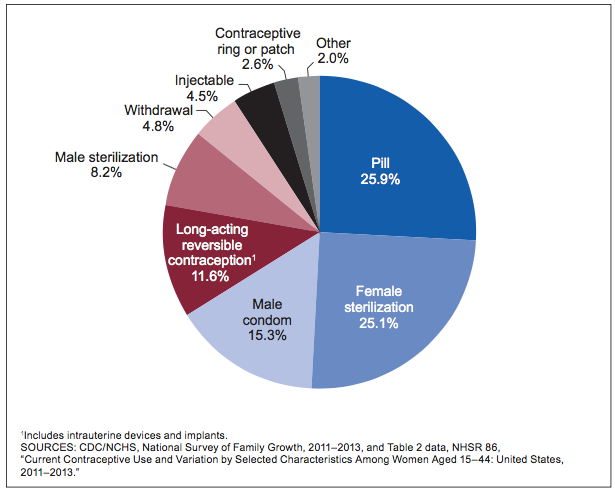14 for women who have never had a baby and 27 for women who have had a baby. 1 About 43 million of them 70 are at risk of unintended pregnancythat is they are sexually active and do not want to become pregnant but could become pregnant if they and their partners fail to use a contraceptive method correctly and consistently.
 Pill And Injectable Birth Control Use By Education U S 2011 2013 Statista
Pill And Injectable Birth Control Use By Education U S 2011 2013 Statista
Birth control use is nearly universal.

Birth control statistics. College students vaccinated against HPV as of fall 2020 by gender How US. Birth control methods may work in a number of different ways. Perfect use or typical use Perfect use sometimes also called lowest expected refers to when the method is used correctly and consistently as directed.
College students described their. Statistic Verification Source. For instance when a couple always used condoms as directed but still became pregnant.
Brittany Malone 23 is another victim of birth control-caused blood clotting. 772014 Birth Control Statistics Total Number of US. Male condom Worn by the man a male condom keeps sperm from getting into a womans body.
Birth control has a far greater risk of blood clots than any Covid-19 vaccine so far claims one April 14 Instagram post. That far greater risk according to. Planned Parenthood Life News Research Date.
Ninety-nine percent of all sexually experienced women and 98 of sexually experienced Catholic women have used it at some point in their lives. Condoms are the most common form of birth control Globally condoms are the most common method of birth control. 21 Zeilen Taken daily by women to suppress ovulation change cervical mucus.
So in our birth control comparison about 8 out of 100 women will get pregnant each year if they dont always use the pill correctly and about 6 out of 100 women will get pregnant each year if they dont always use Depo Provera as directed. The need for contraceptives There are 61 million US. According to the FDA If 10000 women who are not pregnant and do not use birth control pills are followed for one year between 1 and 5 of these women will develop a blood clot.
Women of reproductive age 1544. Women in their childbearing years 62 million Percent of women who get pregnant. Although many birth control options are available 2018 research suggests that females bear most of the burden of contraception in heterosexual relationships in the United States.
Birth control also known as contraception is designed to prevent pregnancy. Americans support including birth control under health insurance plans as preventive health care. Percent of women aged 15-49 currently using the pill.
922 of abortions were performed at 13 weeks gestation. The majority of abortions in 2018 took place early in gestation. Preventing sperm from getting to the eggs.
Latex condoms the most common type help prevent pregnancy and HIV and other STDs as do the newer synthetic condoms. More than 19 million women of reproductive age living in the US are in need of publicly funded contraception and live in contraceptive deserts. Percent of women aged 15-49 currently using long-acting reversible contraception Intrauterine device or contraceptive implant 104.
Blood clots affect mostly older people who are also more likely to be the victims of stroke pulmonary embolisms and heart attacks. Living in a contraceptive desert means that they lack reasonable access in their county to a health center that offers the full range of contraceptive methods. TFR for the United States in 2020 was 16375 births per 1000 women down 4 from the rate in 2019 17060 another record low for the nation 3910.
Erika Langhart 24 Alex Rowan 22 and Julia West Ross 29 each died from a pulmonary embolism caused by birth control. Data are for the US. Keeping the womans ovaries from releasing eggs that could be fertilized.
A smaller number of abortions 69 were performed at 1420 weeks gestation and even fewer 10 were performed at 21 weeks gestation. College students as of fall 2020 Share of US. Birth control methods used by US.
Typical use failure rate. Percent of women aged 15-49 currently using female sterilization. Types include condoms diaphragms cervical caps and contraceptive sponges.
Birth control effectiveness is typically measured from one of two vantage points. In the developing world 35 of birth control is via female sterilization 30 is IUDs 12 is oral contraceptives 11 is condoms and 4 is male sterilization.
